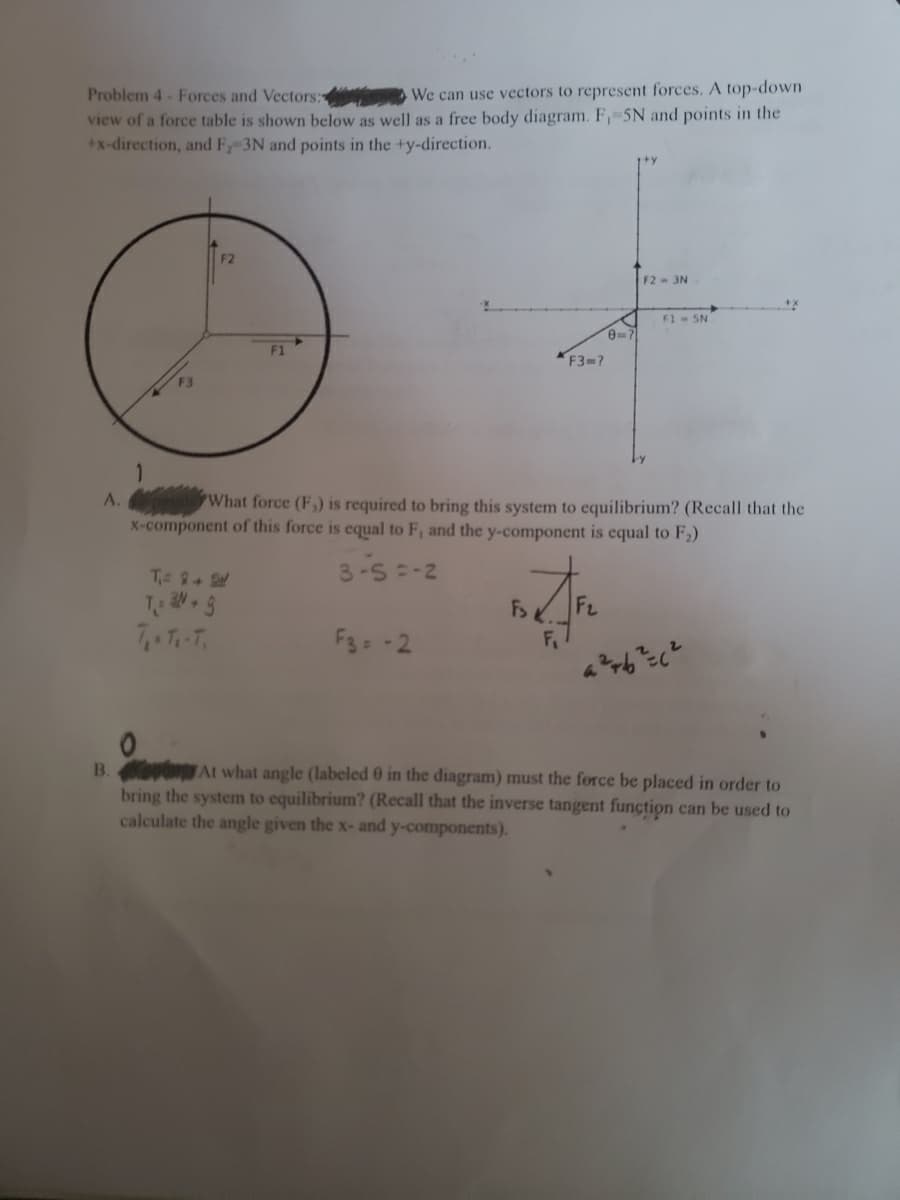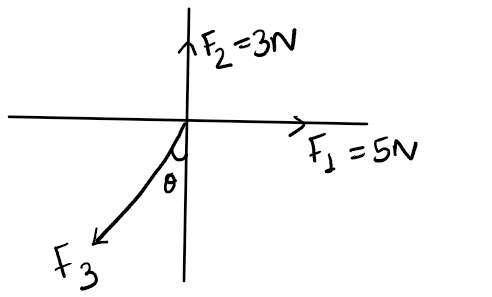- Forces and Vectors: force table is shown below as well as a free body diagram. F,-5N on, and F-3N and points in the +y-direction. We can use vectors to represent
- Forces and Vectors: force table is shown below as well as a free body diagram. F,-5N on, and F-3N and points in the +y-direction. We can use vectors to represent
College Physics
1st Edition
ISBN:9781938168000
Author:Paul Peter Urone, Roger Hinrichs
Publisher:Paul Peter Urone, Roger Hinrichs
Chapter4: Dynamics: Force And Newton's Laws Of Motion
Section: Chapter Questions
Problem 9PE: Suppose two children push horizontally, but in exactly opposite directions, on a third child in a...
Related questions
Question
Can you show me how to solve it and set it up. I got the equation and formula wrong.

Transcribed Image Text:We can use vectors to represent forces. A top-down
Problem 4- Forces and Vectors:
view of a force table is shown below as well as a free body diagram. F,-5N and points in the
*x-direction, and F,-3N and points in the +y-direction.
F2
F2 3N
F1 5N
F1
F3=?
-1
A.
What force (F,) is required to bring this system to equilibrium? (Recall that the
X-component of this force is equal to F, and the y-component is equal to F,)
T 2+2
3-5 =-2
F>
7 T-T.
F3 -2
B. At what angle (labeled 0 in the diagram) must the force be placed in order to
bring the system to equilibrium? (Recall that the inverse tangent function can be used to
calculate the angle given the x- and y-components).
Expert Solution
Step 1
We have given the three forces as shown in the figure
F1 = 5 N , toward +x axis
F2 =3 N, Toward +y axis
F3 with the angle shown in the figure

Trending now
This is a popular solution!
Step by step
Solved in 3 steps with 2 images

Knowledge Booster
Learn more about
Need a deep-dive on the concept behind this application? Look no further. Learn more about this topic, physics and related others by exploring similar questions and additional content below.Recommended textbooks for you

College Physics
Physics
ISBN:
9781938168000
Author:
Paul Peter Urone, Roger Hinrichs
Publisher:
OpenStax College

College Physics
Physics
ISBN:
9781285737027
Author:
Raymond A. Serway, Chris Vuille
Publisher:
Cengage Learning

Physics for Scientists and Engineers, Technology …
Physics
ISBN:
9781305116399
Author:
Raymond A. Serway, John W. Jewett
Publisher:
Cengage Learning

College Physics
Physics
ISBN:
9781938168000
Author:
Paul Peter Urone, Roger Hinrichs
Publisher:
OpenStax College

College Physics
Physics
ISBN:
9781285737027
Author:
Raymond A. Serway, Chris Vuille
Publisher:
Cengage Learning

Physics for Scientists and Engineers, Technology …
Physics
ISBN:
9781305116399
Author:
Raymond A. Serway, John W. Jewett
Publisher:
Cengage Learning

College Physics
Physics
ISBN:
9781305952300
Author:
Raymond A. Serway, Chris Vuille
Publisher:
Cengage Learning

Principles of Physics: A Calculus-Based Text
Physics
ISBN:
9781133104261
Author:
Raymond A. Serway, John W. Jewett
Publisher:
Cengage Learning

Physics for Scientists and Engineers: Foundations…
Physics
ISBN:
9781133939146
Author:
Katz, Debora M.
Publisher:
Cengage Learning